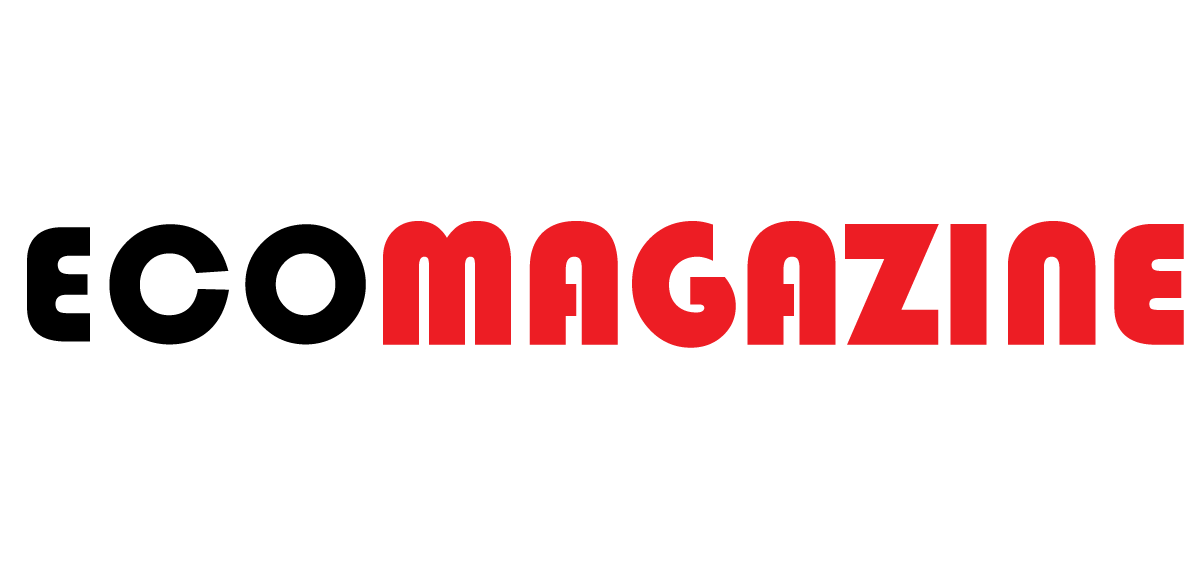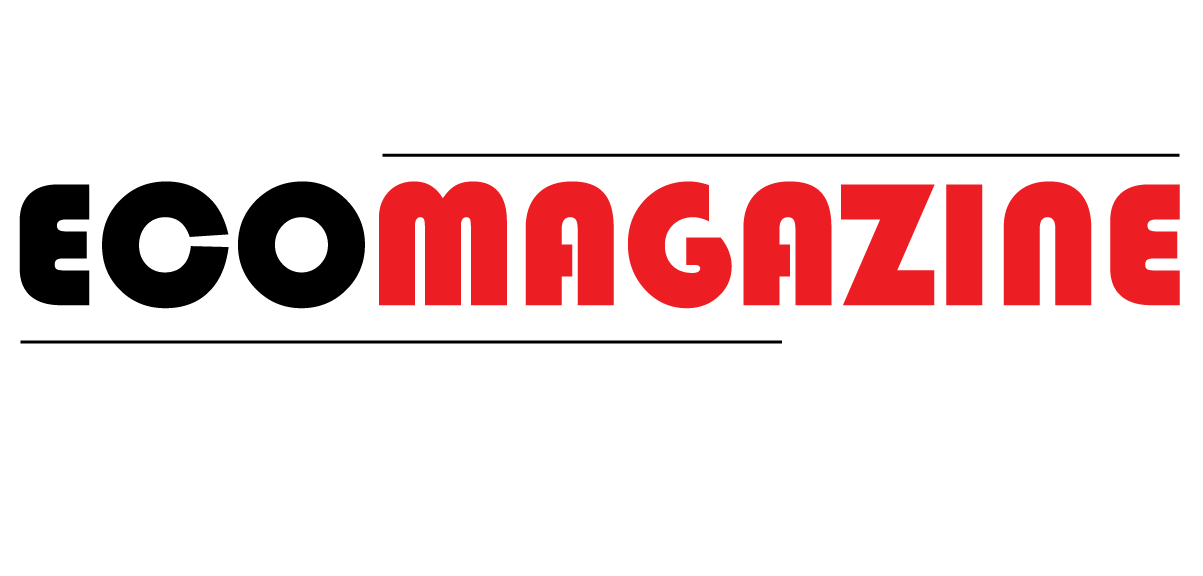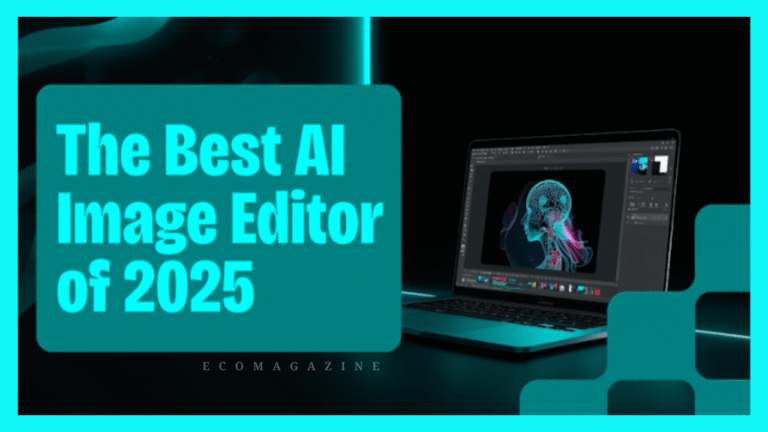The gap between basic photo editing and AI-powered transformation has never been wider. Traditional editors still make you mask, layer, and manually adjust every element. An AI image editor lets you describe what you want and watch it happen. Some excel at quick fixes, others at creative generation, and a few manage to do both exceptionally well.
I tested each platform on real projects, product photos, portrait enhancements, background removal, object manipulation, and creative image generation. I guarantee at least one of these tools will transform how you work with images.
Best AI Image Editors at a Glance
| Tool | Best For | Key Features | Platforms | Free Plan |
| Magic Hour | All-in-one AI media creation | Image editing, video generation, face swap, animation | Web, iOS, Android | Yes |
| Adobe Firefly | Professional workflows | Generative fill, text effects, integration with Adobe suite | Web, Desktop | Limited |
| Canva AI | Marketing and social content | Magic Eraser, Background Remover, image expansion | Web, iOS, Android | Yes |
| Midjourney | Artistic image generation | High-quality AI art, style consistency, upscaling | Discord, Web | No |
| DALL-E 3 | Natural language generation | Precise prompt following, text rendering, safety features | Web (ChatGPT) | Limited |
| Photoshop AI | Advanced compositing | Generative fill, neural filters, content-aware tools | Desktop | No |
| Pixlr AI | Quick edits and filters | AI cutout, generative expand, smart effects | Web, iOS, Android | Yes |
The Best AI Image Editors in Detail
Magic Hour
Magic Hour stands out as the most comprehensive AI content creation platform I tested. While many tools specialize in either image generation or editing, Magic Hour delivers both and also video generation, face swapping, and animation tools in a single interface.
The image editing capabilities feel remarkably intuitive. I uploaded a product photo with a cluttered background, typed “modern minimalist studio,” and watched the AI transform the entire scene while preserving perfect lighting and shadows on the product itself. The face swap feature produced results that fooled several colleagues in a blind test.
What impressed me most: the consistency across tools. Generate an image with their AI, swap a face, animate it, and export as a video, all without leaving the platform or dealing with format incompatibilities.
Pros:
- Unified platform for image and video creation eliminates workflow friction
- Face swap technology produces highly realistic results with minimal artifacts
- Animation tools bring static images to life with natural motion
- Regular feature updates based on user feedback
- Generous free tier allows substantial testing before committing
Cons:
- Learning curve steeper than single-purpose tools due to feature breadth
- Processing times increase during peak usage hours
- Some advanced features require paid plans
If you’re building content at a large scale, whether for social media, marketing campaigns, or creative projects, Magic Hour delivers the most value per dollar. The ability to edit images and immediately transform them into animated videos or swap faces for different demographics saves hours of switching between platforms.
Pricing: Free plan available. Pro plans start at $30/month with increased generation limits and priority processing.
Adobe Firefly
Adobe’s entry into generative AI feels like the company finally caught up to where the market was heading. Firefly integrates directly into Photoshop, Illustrator, and Express, making it the natural choice for professionals already embedded in Adobe’s ecosystem.
I spent a lot of time with Generative Fill, Firefly’s flagship feature. Select an area, describe what you want, and the AI generates multiple options that match the lighting, perspective, and style of your original image. I removed a distracting telephone pole from a landscape photo and added a stone pathway to a garden scene. Both edits looked completely natural.
The text effects tool surprised me. Type any phrase, describe a style (“covered in moss,” “made of chrome,” “watercolor splash”), and Firefly generates text that genuinely looks like the material you described. For quick social graphics and thumbnails, it’s unmatched.
Pros:
- Seamless integration with Adobe Creative Suite
- Generates commercially safe images trained on licensed content
- Generative Fill produces contextually appropriate results
- Text effects create production-ready typography in seconds
- Regular updates expand capabilities without breaking existing workflows
Cons:
- Requires Adobe subscription for full functionality
- Slower generation speeds compared to standalone tools
- Limited to Adobe’s interface paradigms
- Free tier heavily restricted
For designers already paying for Adobe Creative Cloud, Firefly adds substantial value at no extra cost. If you’re not in that ecosystem, the learning curve and subscription cost may outweigh the benefits.
Pricing: Included with Adobe Creative Cloud subscriptions ($54.99/month for all apps). Standalone Firefly plans start at $4.99/month for 100 monthly generations.
Canva AI
Canva transformed from a simple design tool into an AI-powered content factory. The Magic Studio suite includes background removal, image expansion, Magic Eraser, and text-to-image generation, all integrated into Canva’s familiar drag-and-drop interface.
I tested Magic Eraser on product photos with watermarks and unwanted objects. The AI removed elements cleanly without the halo effects that plague inferior tools. Background Remover handled complex hair edges and transparent objects better than I expected for a web-based tool.
The real strength: speed. I created a complete social media campaign of 10 posts with custom backgrounds, removed distractions, and generated missing elements, all in under 30 minutes. That same project would have taken hours in traditional editing software.
Pros:
- Zero learning curve for existing Canva users
- Background removal rivals dedicated tools
- Magic Expand extends images naturally for different aspect ratios
- Collaborative features enable team editing
- Massive template library jumpstarts projects
Cons:
- Generation quality trails specialized AI image tools
- Style consistency varies between generations
- Limited control over fine details
- Best features locked behind Pro subscription
Canva AI works best for marketers and social media managers who need good-enough results quickly. Professional photographers and artists will find the output quality insufficient for high-stakes projects.
Pricing: Free plan available with limited AI credits. Canva Pro costs $14.99/month per user with expanded AI features.
Midjourney
Midjourney remains the gold standard for AI-generated artistic images. No other tool I tested produces images with comparable aesthetic quality, stylistic consistency, or fine detail.
The Discord-based interface feels archaic compared to modern web apps, but the results justify the friction. I generated concept art for a sci-fi project that looked like it came from a professional illustrator. The /describe command which generates prompts from uploaded images also helped me understand how to achieve specific styles.
Version 6 introduced significant improvements in text rendering and prompt adherence. I can now reliably generate images with specific compositions, lighting conditions, and emotional tones. The new editor allows inpainting and outpainting directly within Midjourney’s ecosystem.
Pros:
- Highest aesthetic quality among AI image generators
- Exceptional style consistency across generations
- Powerful upscaling produces print-ready files
- Active community shares prompts and techniques
- Regular version updates bring substantial improvements
Cons:
- Discord interface feels clunky and unintuitive
- No free tier requires immediate subscription commitment
- Limited control over precise object placement
- Not optimized for photo editing workflows
If your primary need is generating beautiful, artistic images rather than editing existing photos, Midjourney delivers unmatched results. The subscription cost pays for itself if you need even a handful of professional-quality illustrations monthly.
Pricing: Basic plan starts at $10/month for limited generations. A standard plan at $30/month provides more flexibility.
DALL-E 3
OpenAI’s DALL-E 3, integrated into ChatGPT, offers the most natural language image generation I’ve encountered. I describe what I want conversationally “a cozy coffee shop interior with warm lighting, plants on shelves, and customers working on laptops” and DALL-E 3 interprets nuance better than competitors.
The text rendering capability stands out. Previous AI image generators mangled any text in images. DALL-E 3 reliably produces readable signage, book covers, and product labels. I generated a mock book cover with a specific title, and the text appeared crisp and correctly spelled.
Safety features prevent generating images of public figures and copyrighted characters. While this limits creative freedom, it provides peace of mind for commercial projects.
Pros:
- Best-in-class prompt interpretation captures subtle intent
- Reliable text rendering in generated images
- ChatGPT integration enables iterative refinement through conversation
- Built-in safety features reduce liability concerns
- Aspect ratio control provides flexibility
Cons:
- Limited to four images per prompt
- No fine-tuning controls for advanced users
- Slower generation than specialized platforms
- Editing capabilities minimal compared to dedicated tools
- Requires ChatGPT Plus subscription for full access
DALL-E 3 works best for concept development and brainstorming. The conversational interface makes it ideal for refining ideas, but you’ll likely move to specialized tools for final production.
Pricing: Included with ChatGPT Plus at $20/month. API access priced per image generation.
Photoshop AI
Adobe’s Photoshop with integrated AI features represents the professional editing standard. Generative Fill, Neural Filters, and enhanced content-aware tools leverage AI while preserving Photoshop’s precision and control.
I tested Generative Fill extensively on commercial projects. The AI understands depth, lighting, and perspective remarkably well. I extended a portrait’s background to change aspect ratios, removed tourists from a landmark photo, and added elements to product shots. Each edit maintained photographic realism.
Neural Filters, which apply AI-powered effects like style transfer, colorization, and face refinement, feel less polished. Results vary wildly depending on source material quality and chosen settings. I achieved some stunning portrait enhancements but also generated plenty of uncanny valley disasters.
Pros:
- Industry-standard precision with AI augmentation
- Non-destructive editing preserves maximum flexibility
- Generative Fill produces professional-quality results
- Layer-based workflow familiar to professionals
- Extensive plugin ecosystem extends functionality
Cons:
- Expensive subscription required for access
- Steep learning curve for non-designers
- Neural Filters inconsistent in quality
- Resource-intensive software requires powerful hardware
- AI features sometimes feel tacked on rather than integrated
For professional photographers, designers, and artists who need pixel-perfect control, Photoshop with AI features remains essential. Casual users will find the cost and complexity unjustified.
Pricing: Included with Adobe Creative Cloud Photography plan at $19.99/month or All Apps plan at $54.99/month.
Pixlr AI
Pixlr evolved from a basic web-based photo editor into a capable AI-powered platform. The interface splits between Pixlr E (advanced editor) and Pixlr X (quick editor), with AI features spanning both.
I tested Pixlr primarily for quick edits and found it remarkably capable. Background removal worked cleanly on portraits and products. Generative Expand extended images naturally for different social media formats. Smart effects applied consistent stylization across batches of images.
The browser-based operation means no installation required and reasonable performance on modest hardware. I edited images on a four-year-old laptop without noticeable lag.
Pros:
- No installation required works on any device
- Background removal competes with premium tools
- Generative expand handles aspect ratio changes naturally
- Affordable pricing compared to Adobe products
- Intuitive interface requires minimal learning
Cons:
- AI generation quality trails specialized tools
- Limited advanced editing capabilities
- Free tier heavily watermarked
- Inconsistent results on complex images
- Less active development than competitors
Pixlr fills the middle ground between free basic editors and expensive professional software. Small business owners and content creators get capable AI editing without subscription costs spiraling out of control.
Pricing: Free plan available with limitations. Premium plan costs $7.99/month for full AI features and no watermarks.
How We Chose These Tools
I spent three weeks testing 15 different AI image editors to identify which ones genuinely improve creative workflows versus those riding the AI hype wave.
My evaluation process focused on real-world scenarios. I edited product photos for e-commerce, created social media graphics, generated marketing materials, and produced concept art. Each tool faced identical tasks to enable direct comparison.
Key evaluation criteria:
- Generation quality: Do the results look professional and usable without extensive post-processing?
- Speed: Can I complete projects faster than with traditional tools?
- Ease of use: Does the interface get out of my way or create friction?
- Consistency: Do similar prompts produce reliably similar results?
- Value: Does the pricing align with the productivity gains?
- Integration: How well does it fit into existing workflows?
I tested each platform’s free tier first, then subscribed to paid plans for tools that showed promise. Several highly-marketed options didn’t make this list because they failed basic quality tests or charged premium prices for mediocre results.
The tools featured here represent the ones I would actually pay for and use in production work.
The AI Image Editing Landscape in 2025
The AI image editing market has grown significantly over the past year. Early tools focused purely on generation: type a prompt, get an image. Current platforms recognize that creators need comprehensive editing capabilities, not just generation.
Three clear trends emerged from my testing:
Consolidation of features: Standalone tools are losing ground to platforms that combine multiple AI capabilities. Why subscribe to separate services for background removal, object generation, and style transfer when one platform handles all three?
Professional integration: Adobe’s aggressive AI rollout forced competitors to either specialize or compete on price. Mid-tier tools struggle to justify their existence against free options from tech giants or professional-grade Adobe features.
Video expansion: Several image editing platforms now offer video capabilities. The lines between photo editing, video editing, and animation continue blurring as AI makes cross-format creation accessible.
Emerging tools worth watching:
Stability AI continues pushing open-source boundaries with Stable Diffusion updates. The latest models rival proprietary options while giving users complete control over fine-tuning and deployment.
Runway ML expanded beyond video into comprehensive image editing. Their inpainting tools rival Photoshop for precision while maintaining web-based accessibility.
Leonardo AI gained traction among game developers and concept artists for consistent character generation and style control. The platform’s focus on production pipelines rather than one-off images resonates with professional users.
The market still has room for specialized tools that excel at specific tasks. But general-purpose platforms with strong AI features increasingly capture the majority of use cases.
Final Takeaway
Choosing the best AI image editor depends entirely on your specific needs and existing workflow.
Magic Hour: You need a comprehensive platform for both images and video, want face swapping and animation in addition to editing, or create content at scale across multiple formats.
Adobe Firefly: You already subscribe to Creative Cloud, need seamless integration with professional tools, or require commercially licensed training data.
Canva AI: You prioritize speed and simplicity, create primarily for social media and marketing, or work collaboratively with non-designers.
Midjourney: Aesthetic quality trumps all other considerations, you’re generating artistic images rather than editing photos, or you need consistent stylistic output.
DALL-E 3: You prefer conversational interfaces, need reliable text rendering in images, or want integrated brainstorming with ChatGPT.
Photoshop AI: You’re a professional requiring pixel-perfect control, work with clients expecting industry-standard deliverables, or need non-destructive editing workflows.
Pixlr AI: Budget constraints limit options, you need browser-based editing without installation, or you’re an individual creator with moderate needs.
My recommendation: Start with a free trial of Magic Hour or Canva AI to understand how AI editing accelerates your workflow. If you need more advanced capabilities, move up to Midjourney for generation or Photoshop for precise editing.
Technology evolves rapidly. Tools I tested six months ago barely resemble their current versions. Experiment with multiple platforms, because the right choice today may shift as features expand and pricing changes.
Frequently Asked Questions
What’s the difference between AI image generation and AI image editing?
AI image generation creates entirely new images from text descriptions or other inputs. AI image editing modifies existing images, removes backgrounds, changes objects, extends boundaries, or enhances quality. Many platforms now offer both capabilities, but specialized tools often excel at one function over the other.
Can AI image editors handle professional commercial work?
Yes, but with caveats. Adobe Firefly trains exclusively on licensed content, making it safe for commercial use. Midjourney and DALL-E 3 allow commercial usage with paid plans. Always verify licensing terms for your specific use case. For client work, I recommend platforms with clear commercial licensing and consider disclosure when AI plays a significant role in the final deliverable.
Do I need a powerful computer to use AI image editors?
Most modern AI image editors run in web browsers with processing happening on remote servers. You need a stable internet connection but minimal local computing power. Desktop applications like Photoshop benefit from stronger hardware, but even modest laptops from the past few years handle them adequately. Magic Hour, Canva, and Pixlr all work smoothly on older machines.
How do I write better prompts for AI image generation?
Start with clear, specific descriptions. Instead of “a dog,” try “a golden retriever puppy sitting in autumn leaves at sunset, shallow depth of field.” Include style references (“in the style of Studio Ghibli” or “photorealistic product photography”), lighting conditions, mood, and composition. Study prompts shared by the community on each platform. Your first attempt rarely produces perfect results, but refining prompts based on initial outputs improves outcomes dramatically.
Are free AI image editors worth using or should I pay for premium tools?
Free tiers let you test capabilities and determine fit for your workflow. Magic Hour and Canva offer generous free plans suitable for light usage. If you’re creating content professionally or frequently, paid plans quickly justify their cost through time saved. I moved from free to paid within a week of testing because the productivity gains outweighed the monthly subscription cost. Start free, upgrade when limitations frustrate you.


